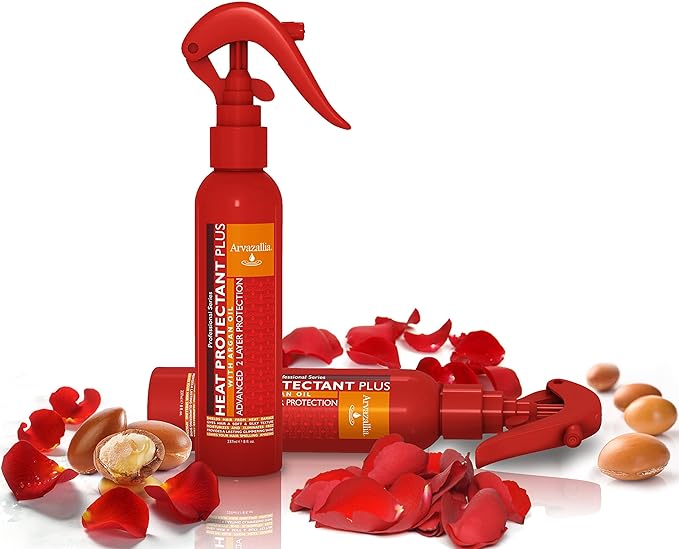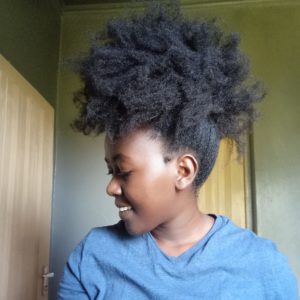Bestie, let’s talk about stretching 4C hair. If you’ve ever struggled with single strand knots, shrinkage, or just wanting to see more of your actual length, you’ve probably thought about stretching your hair. But the big question is, should you stretch your hair with heat or without it? There are pros and cons to both methods, and the right choice depends on your hair goals, lifestyle, and how much effort you’re willing to put into maintenance. Let’s get into the details so you can decide what works best for you.
Should You Use Heat or Heatless Method to Stretch 4C Hair?
Why Stretching 4C Hair is Important
4C hair has the most shrinkage out of all hair types, sometimes up to 75 percent. That means even if your hair is growing, it might not always look like it because the tight coils make it appear shorter. While shrinkage is a sign of healthy hair, it can also lead to tangles, knots, and breakage if left unmanaged.
Stretching helps to:
- Reduce single strand knots and tangles
- Make detangling easier
- Show more length
- Give versatility in styling
- Help retain length by minimizing breakage
Now, let’s dive into the two main methods of stretching: using heat and going heat-free.

Stretching 4C Hair with Heat
Heat stretching is a quick and effective way to elongate your hair, but it does come with risks. The most common heat-based methods include blow-drying, flat ironing, and using a hot comb.
Pros of Using Heat to Stretch 4C Hair
- Instantly stretches hair with minimal effort
- Provides sleek, smooth results
- Makes styling easier, especially for protective styles like braids and twists
- Reduces shrinkage significantly
Cons of Using Heat to Stretch 4C Hair
- Risk of heat damage if not done correctly
- Can weaken the hair over time if used too often
- Requires extra moisture and heat protection to prevent dryness

How to Safely Stretch 4C Hair with Heat
If you decide to use heat, always take precautions to protect your hair from damage.
- Start with Clean, Conditioned Hair
Heat should only be used on well moisturized hair. Wash with a sulfate-free shampoo like the SheaMoisture Jamaican Black Castor Oil Strengthen & Restore Shampoo and follow up with a deep conditioner like TGIN Honey Miracle Hair Mask to keep your hair strong. - Apply a Heat Protectant
Never skip this step. A good heat protectant, like the Mielle Mongongo Oil Thermal & Heat Protectant Spray, creates a barrier between your hair and the heat tool, reducing the risk of damage. - Use the Right Tools and Settings
A blow dryer with a comb attachment or a tension method works well for stretching. If using a flat iron, keep it at a low to medium heat setting (below 350°F) to avoid heat damage. A quality dryer like the Revlon One-Step Hair Dryer and Styler can make the process easier. - Limit Heat Use
Using heat too often can weaken your strands over time. Try to limit heat styling to once a month or less to maintain healthy hair.
Stretching 4C Hair Without Heat
Heat free stretching is a safer and more natural way to elongate your curls without the risk of damage. It takes longer than using heat, but it helps keep your hair strong and healthy in the long run.
Popular Heat-Free Stretching Methods
- Banding Method
This involves using hair ties or elastic bands to stretch the hair in sections. After washing and moisturizing your hair, divide it into sections and wrap bands along each section from root to tip. Let it air dry, and when you remove the bands, your hair will be stretched. Using satin scrunchies instead of rubber bands reduces breakage. - African Threading
A traditional method where black thread is wrapped tightly around sections of hair to stretch it. It gives results similar to a blowout but without the heat. Using a lightweight oil like the Tropic Isle Living Jamaican Black Castor Oil before threading adds extra moisture and shine. - Twist or Braid Stretching
Two-strand twists or braids help elongate the hair as it dries. The bigger the twists or braids, the more stretched the hair will be. To enhance stretch, unravel them when completely dry and gently separate them with your fingers. A good styling butter like Camille Rose Almond Jai Twisting Butter can help keep hair soft and defined. - Roller or Flexi Rod Set
Setting your hair with rollers or flexi rods overnight helps to stretch and smooth curls. This method is great for heatless blowout styles or creating stretched curls without direct heat. Satin-covered rollers reduce tension and prevent frizz. - Pineappling
If you have medium to long 4C hair, gathering it into a loose, high puff at night helps to stretch it over time. This works best when combined with other stretching methods.
Pros of Heat-Free Stretching
- No risk of heat damage
- Helps retain moisture and elasticity
- Strengthens the hair over time
- Can be done frequently without weakening the hair
Cons of Heat-Free Stretching
- Takes longer to achieve results
- May not provide as much stretch as heat-based methods
- Requires overnight or extended drying time

Which Method is Best for You?
If you’re looking for a quick stretch for a specific style or special occasion, heat stretching can be an option—just make sure to use heat protectant and keep the temperature low. But if your goal is long-term length retention and maintaining your hair’s health, heat-free methods are the best way to go.
Many naturalistas find that alternating between the two works best. You can primarily use heat-free methods but occasionally use heat when needed. The key is to listen to your hair, moisturize consistently, and avoid excessive manipulation.
No matter which method you choose, stretching your 4C hair can make a huge difference in your hair’s manageability and health. Experiment with different techniques to see what works best for your lifestyle.
What’s your favorite way to stretch your hair?



